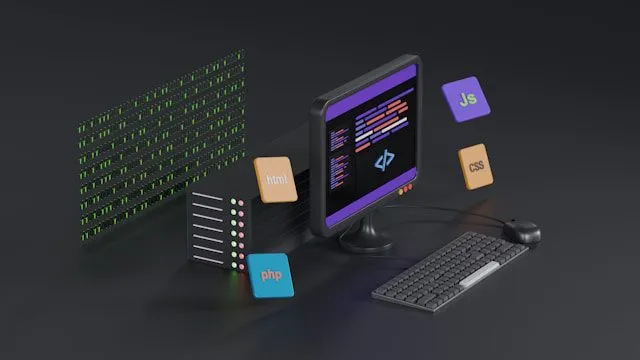What Is SEO – Search Engine Optimization?
Introduction: The Gateway to Online Visibility
What Is SEO: In today’s digital landscape, where billions of searches are conducted every single day, the ability to stand out among the endless ocean of content is not just a luxury—it’s a necessity. Whether you’re a small business owner, a digital marketer, or a content creator, understanding Search Engine Optimization (SEO) can be the key to unlocking explosive growth and sustained online visibility.
But what exactly is SEO? Why is it important? And how can you harness its power to take your website or business to the next level? In this comprehensive article, we’ll explore SEO from its foundational principles to advanced strategies used in 2025, offering more than just a definition—this is your roadmap to dominating search engine results.
Understanding the Basics of SEO
What Does SEO Stand For?
SEO stands for Search Engine Optimization, a set of practices designed to improve a website’s visibility in organic (non-paid) search engine results. It’s about understanding how search engines work and what users are searching for, then using that information to create content that will appear at the top of search results.
Why Is SEO Important?
- Organic search drives over 53% of all website traffic.
- SEO leads have a close rate of over 14%, compared to just 1.7% for outbound leads.
- Unlike paid ads, SEO delivers long-term results without recurring costs.
Search engines are the starting point for nearly every online experience, and if your website isn’t appearing in those search results, it’s like owning a store in the middle of the desert—no one will find you.

How Search Engines Work
To understand SEO, you need to understand how search engines like Google work. Here are the three core functions:
1. Crawling
Search engines use bots (also called spiders) to scan the web for new or updated content. They follow links from one page to another, gathering information and building a massive index.
2. Indexing
Once a page is crawled, its content is stored in a massive database. Search engines analyze its structure, content, keywords, and metadata to decide where and how it should appear in search results.
3. Ranking
When a user types in a search query, the search engine pulls relevant pages from the index and ranks them based on hundreds of factors, including:
- Content relevance
- Page speed
- Mobile-friendliness
- Backlink profile
- User experience
- Domain authority
Core Elements of SEO
1. On-Page SEO
On-page SEO refers to the elements on your website that you can control:
– Keyword Optimization
Incorporate relevant keywords naturally into your content, including the title, headers, meta description, and body.
– Content Quality
Content should be original, informative, engaging, and aligned with search intent.
– Internal Linking
Guide users through your website using internal links. This also helps search engines crawl your site more efficiently.
– Meta Tags
Meta titles and descriptions are what users see in the search results. Well-written tags increase click-through rates (CTR).
– Image Optimization
Compress images for faster load times and include alt text for SEO and accessibility.
2. Off-Page SEO
Off-page SEO involves actions taken outside your website to impact your rankings.
– Backlinks
A backlink is a vote of confidence from another site. The more high-authority backlinks you have, the more credible your site appears.
– Social Media Signals
Social shares don’t directly impact rankings but can drive traffic and visibility.
– Influencer Outreach and Guest Blogging
Writing content for other platforms can bring valuable backlinks and expose your brand to new audiences.
3. Technical SEO
Technical SEO ensures your website is optimized for the technical requirements of modern search engines.
– Website Speed
Faster websites perform better in rankings. Use tools like Google PageSpeed Insights or GTmetrix to measure and improve.
– Mobile Optimization
With mobile-first indexing, your site must be fully functional on smartphones and tablets.
– Secure Sockets Layer (SSL)
HTTPS is now a ranking signal. Sites without SSL certificates may be penalized.
– XML Sitemap and Robots.txt
These help search engines understand your site structure and guide crawling.

SEO and User Intent
In 2025, SEO has moved beyond keywords and into user intent. Google’s algorithm is now focused on understanding why a user is searching and delivering content that best satisfies that need.
Types of Search Intent:
- Informational: The user wants to learn something (e.g., “What is SEO?”)
- Navigational: The user is looking for a specific site or brand (e.g., “Facebook login”).
- Transactional: The user is ready to buy (e.g., “Buy Nike running shoes”).
Craft your content to match each type of intent, especially using long-tail keywords that reflect how people actually search.
Measuring SEO Success
You can’t improve what you can’t measure. Use these tools and metrics to track your SEO progress:
Tools:
- Google Analytics 4 (GA4): Understand user behavior and traffic sources.
- Google Search Console: Monitor site performance, keyword rankings, and indexing.
- SEMrush, Ahrefs, or Moz: Track backlinks, keyword positions, and technical issues.
Key Metrics:
- Organic traffic
- Keyword rankings
- Bounce rate
- Pages per session
- Conversion rate
- Backlink profile
Common SEO Mistakes to Avoid
Even small errors can hurt your SEO. Here are common pitfalls:
- Keyword stuffing
- Using duplicate content
- Ignoring mobile users
- Neglecting technical SEO
- No structured data
- Poor internal linking
Fixing these mistakes can often lead to quick improvements in rankings and traffic.
SEO in 2025: Emerging Trends and Best Practices
1. Voice Search Optimization
With the rise of smart assistants, content needs to be optimized for natural language and conversational queries.
2. Featured Snippets and Zero-Click Results
Aim to win the coveted position zero by structuring content clearly (using bullet points, FAQs, tables).
3. AI-Powered Search Engines
Search engines like Google now use AI (e.g., BERT, MUM) to better understand content. Context matters more than keywords.
4. Video SEO
Videos on YouTube and embedded in content are powerful tools for engagement and ranking. Optimize your video titles and descriptions, and add transcripts.
5. E-E-A-T
Experience, Expertise, Authoritativeness, and Trustworthiness. Particularly important for “Your Money or Your Life” (YMYL) topics.
Local SEO and the Power of Maps
If you have a physical location, Local SEO is crucial. Key actions include:
- Claiming and optimizing your Google Business Profile
- Getting local citations (e.g., Yelp, Yellow Pages)
- Encouraging positive reviews
- Including location-specific keywords
This helps you appear in Google Maps and local search results.
SEO vs. Paid Advertising
| Feature | SEO | Paid Ads |
|---|---|---|
| Cost | Free (ongoing effort) | Paid per click or impression |
| Speed | Slow to start, long-lasting | Immediate traffic |
| Longevity | Sustainable over time | Stops when the budget runs out |
| Trust Factor | High (organic rankings) | Perceived as ads |
| Conversion Rate | Higher for long-term traffic | May vary depending on targeting |
For best results, many businesses combine SEO with PPC (Pay-Per-Click) strategies.
Conclusion: Why You Need SEO Now More Than Ever
Search Engine Optimization is no longer optional—it’s essential. In a digital world where everyone is fighting for attention, SEO is your most powerful weapon to be discovered, trusted, and chosen.
Whether you’re building a blog, launching an e-commerce store, or running a global enterprise, investing in SEO is investing in the future of your business.
SEO is not a one-time job; it’s an ongoing strategy that requires patience, consistency, and adaptation. But the rewards—sustainable traffic, brand authority, and increased sales—are more than worth the effort.


